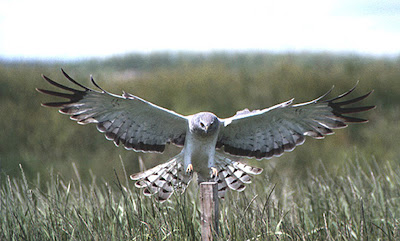Tags
This week, a coalition of 25 organisations which campaign and research on wildlife in the UK have launched a landmark report – The State of Nature. This is the first time that the UK’s wildlife advocates have collaborated to produce such a comprehensive overview of the current status of native species, and it represents a significant achievement in biological monitoring.
The headlines from the report aren’t encouraging. 60% of the 3000-plus species studied have declined over the last 50 years, with 31% showing a strong decline. There have been some alarming recent drastic declines, including some well-known species; numbers of Hedgehog (Erinaceus europaeus) have fallen by around a third since 2000, for instance.
Of particular concern is the fate of a selection of species from the UK Biodiversity Action Plan, which have been a priority for active conservation efforts since at least the 1990s. The abundance of these 155 species, most of which are birds or lepidopterans, have been aggregated into a “Watchlist” which indicates the population trends of these priority species.
 As the graph makes clear, the general trend is a steady fall – despite some welcome gains shown by certain species such as Bittern (Botaurus stellaris), the overall pattern is a 77% decline in these 155 species over the last four decades. Of course, most would have been in trouble before this period (that’s why they were chosen as conservation priorities!), but it’s chastening to realise that despite 40 years of conservation efforts, these species have continued to struggle.
As the graph makes clear, the general trend is a steady fall – despite some welcome gains shown by certain species such as Bittern (Botaurus stellaris), the overall pattern is a 77% decline in these 155 species over the last four decades. Of course, most would have been in trouble before this period (that’s why they were chosen as conservation priorities!), but it’s chastening to realise that despite 40 years of conservation efforts, these species have continued to struggle.
Overall, this impressive report paints a sobering picture of biodiversity in decline, but it also highlights how little we actually know. There was sufficient data on 3,148 species to allow them to be included in the report, but this is only 5% of the estimated 59,000+ species in the UK, with some groups (such as invertebrates) particularly underrepresented. This strikes me as a remarkable statistic. The UK is densely-populated and relatively small, and has a long natural history tradition and an enviable network of both amateur and professional recording – and yet we have a good understanding of such a small fraction of our biota. The data deficit in larger, less studied and more biodiverse regions such as the tropics must be larger still.
So, we can’t really say how 95% of UK wildlife is faring, and that worries me as much as anything. It seems to me that if we don’t know enough about a species to evaluate its conservation prospects, it’s unlikely to be quietly doing well. One of the findings of the State of Nature report is the fact that adaptable generalists are doing better that species with more specific requirements – and little-studied and under-appreciated species are unlikely to be adaptable generalists. It’s not at all surprising that adaptable species are at an advantage. Dramatic environmental changes (including climate change) are the harbingers of the Eremozoic, and so adaptability to change will be a crucial factor in ecosystems.
 Despite the limited data available, this important report is the best overview yet of the fortunes of UK biodiversity…..and it’s not looking good. So, have UK conservationists lost the battle? David Attenborough‘s introduction to the report smartly navigates the terrain between crisis and optimism, presenting it as a “stark warning” whilst taking “hope and inspiration” from the conservation efforts it highlights. I wonder which message will predominate in reaction to the publicity gained by the report.
Despite the limited data available, this important report is the best overview yet of the fortunes of UK biodiversity…..and it’s not looking good. So, have UK conservationists lost the battle? David Attenborough‘s introduction to the report smartly navigates the terrain between crisis and optimism, presenting it as a “stark warning” whilst taking “hope and inspiration” from the conservation efforts it highlights. I wonder which message will predominate in reaction to the publicity gained by the report.
I choose to see The State of Nature as a call to arms rather than an inventory of defeat. The biodiversity crisis is incredibly daunting, in the UK as elsewhere, but for me this report itself is a weapon in the fight against the crisis. Knowing more about what’s at risk is an essential first step in trying to change things, and I hope the report will help to inspire people to appreciate what may be lost, and thus consider what might be done.
As a personal example, I’ll highlight the plight of poor, unloved Corn Cleavers (Galium tricornutum), which the report cites as an example of one of the most dramatic plant declines. It was formerly widespread as an arable weed, but is now found at a single site in southern England, and classed as Critically Endangered. For some reason I was particularly struck by the plight of this unglamorous, obscure plant, forced to the edge of extinction by agricultural intensification, and which looks very similar to its extremely abundant relative Cleavers (Galium aparine). I’ll probably never get a chance to try and tell the two species apart, but I’m now engaged by the story of Corn Cleavers and will be watching its progress with interest. There’s one more person now who would notice, and mourn, if it were to go extinct, and that’s a tiny spark of hope. Perhaps conservation efforts need to start by capturing the imagination.
















